Menus
- Motocross comparison test MX2 (250 cm³)
- Husqvarna TC 250 R
- Yamaha YZ 250 F.
- Suzuki RM-Z 250
- Kawasaki KX 250 F
- KTM 250 SX-F
- Off-road rating and test result
- Technical specifications
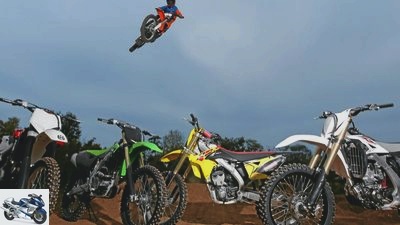
Jahn
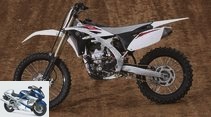
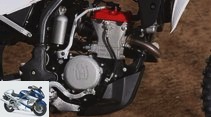
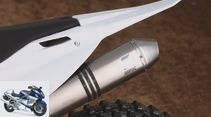
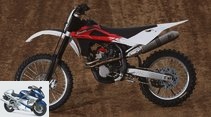
35 photos

Jahn
1/35
Husqvarna TC 250 R in the motocross comparison test.
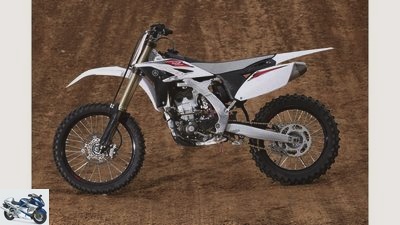
Jahn
2/35
Yamaha YZ 250 F in the motocross comparison test.
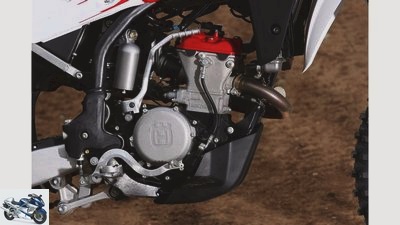
Jahn
3/35
Husqvarna TC 250 R in the motocross comparison test.
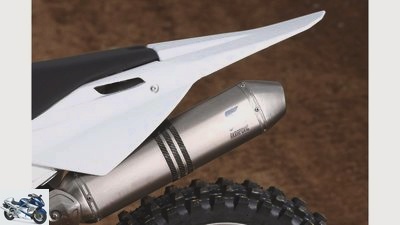
Jahn
4/35
Husqvarna TC 250 R in the motocross comparison test.
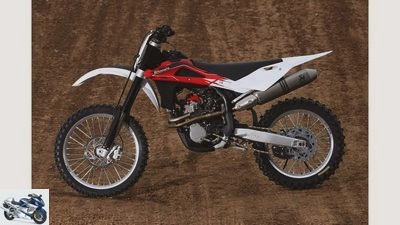
Jahn
5/35
Husqvarna TC 250 R in the motocross comparison test.
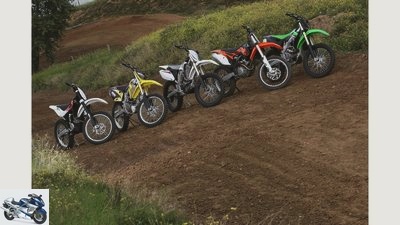
Jahn
6/35
In the upper speed quarter, the performance spectrum spreads significantly. The clear boss in the ring: KTM.
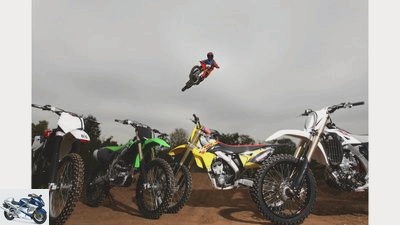
Jahn
7/35
So far, the performance curves of the MX2 motors have moved within a narrow window. That changes with the 2013 models.
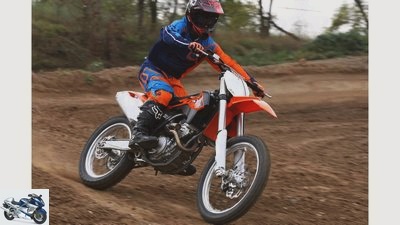
Jahn
8/35
KTM 250 SX-F in the motocross comparison test.
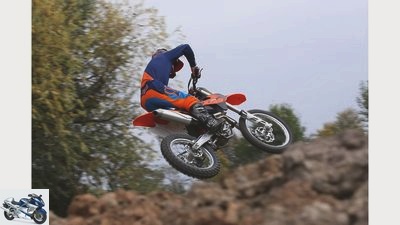
Jahn
9/35
KTM 250 SX-F in the motocross comparison test.
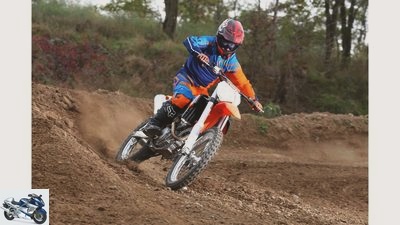
Jahn
10/35
KTM 250 SX-F in the motocross comparison test.
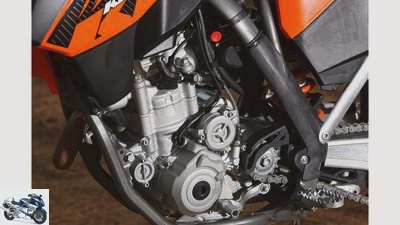
Jahn
11/35
KTM 250 SX-F in the motocross comparison test.
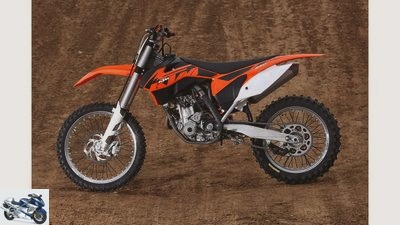
Jahn
12/35
KTM 250 SX-F in the motocross comparison test.

Jahn
13/35
Suzuki RM-Z 250 in the motocross comparison test.
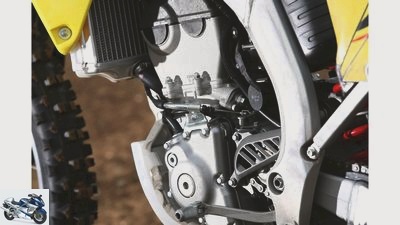
Jahn
14/35
Suzuki RM-Z 250 in the motocross comparison test.
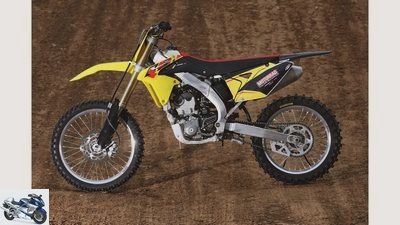
Jahn
15/35
Suzuki RM-Z 250 in the motocross comparison test.
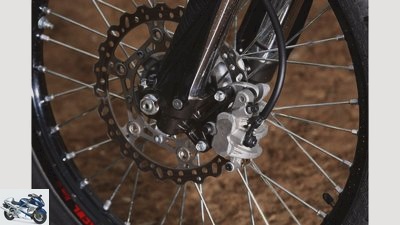
Jahn
16/35
Yamaha YZ 250 F in the motocross comparison test.
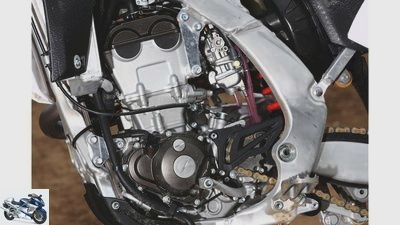
Jahn
17/35
Yamaha YZ 250 F in the motocross comparison test.

Jahn
18/35
Yamaha YZ 250 F in the motocross comparison test.
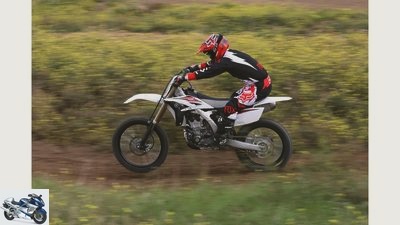
Jahn
19/35
Yamaha YZ 250 F in the motocross comparison test.
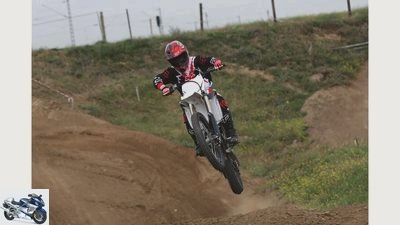
Jahn
20/35
Yamaha YZ 250 F in the motocross group test.
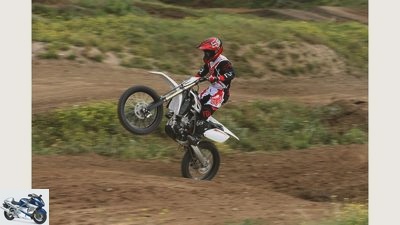
Jahn
21/35
Yamaha YZ 250 F in the motocross comparison test.
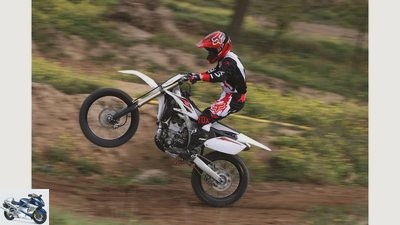
Jahn
22/35
Yamaha YZ 250 F in the motocross comparison test.
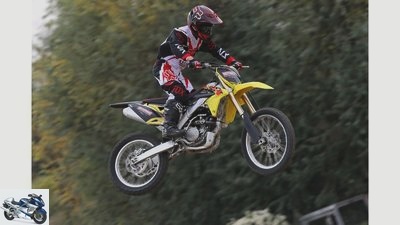
Jahn
23/35
Suzuki RM-Z 250 in the motocross comparison test.
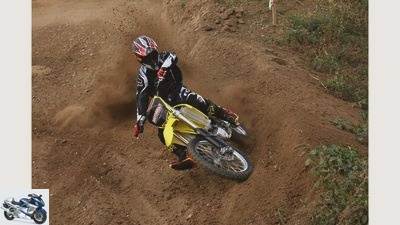
Jahn
24/35
Suzuki RM-Z 250 in the motocross comparison test.
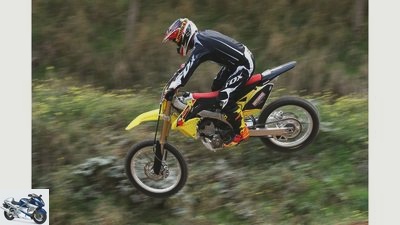
Jahn
25/35
Suzuki RM-Z 250 in the motocross comparison test.
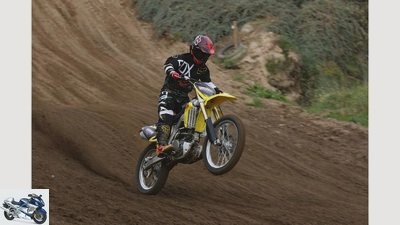
Jahn
26/35
Suzuki RM-Z 250 in the motocross comparison test.
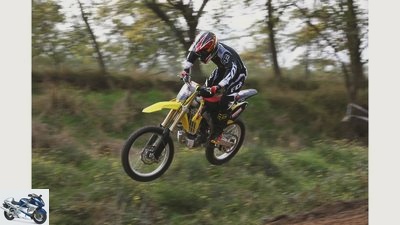
Jahn
27/35
Suzuki RM-Z 250 in the motocross comparison test.

Jahn
28/35
Husqvarna TC 250 R in the motocross comparison test.
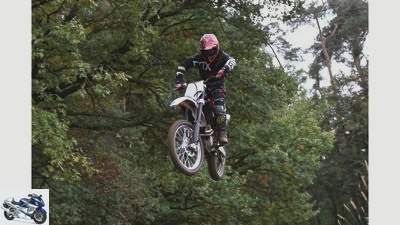
Jahn
29/35
Husqvarna TC 250 R in the motocross comparison test.

Jahn
30/35
Husqvarna TC 250 R in the motocross comparison test.
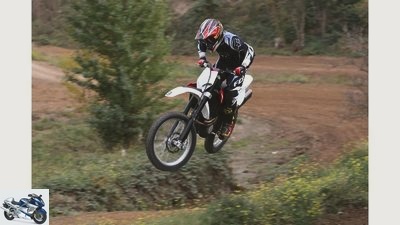
Jahn
31/35
Husqvarna TC 250 R in the motocross comparison test.
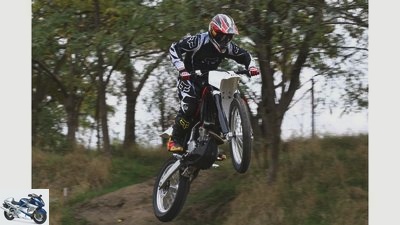
Jahn
32/35
Husqvarna TC 250 R in the motocross comparison test.
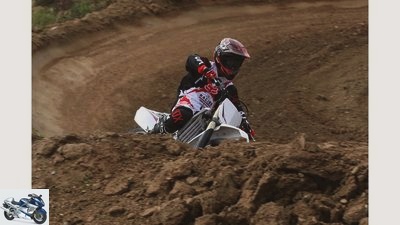
Jahn
33/35
Yamaha YZ 250 F in the motocross group test.
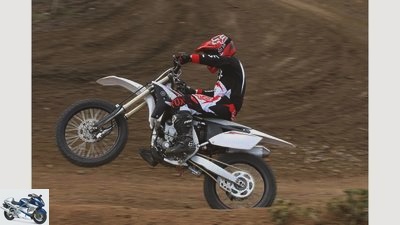
Jahn
34/35
Yamaha YZ 250 F in the motocross group test.
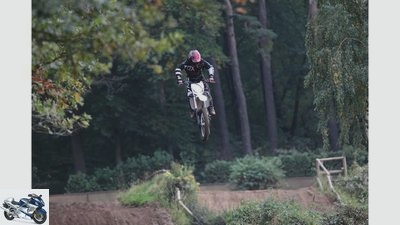
Jahn
35/35
Husqvarna TC 250 R in the motocross comparison test.
KTM 250 SX-F, Husqvarna TC 250 R, Kawasaki KX 250 F, Suzuki RM-Z 250, Yamaha YZ 250 F
Motocross comparison test MX2 (250 cm³)
The competition is enormous, the engine performance is literally exploding – if you want to stay at the top of the 250cc crossers, you can’t afford to be weak. What is the name of the new high-flyer of the MX2 bikes?
Husqvarna TC 250 R
I.n no other off-road category are powerful engines as essential to success as in the MX2 class. Why? Because with the comparatively moderate engine power, significantly more drivers are able to pull the cable vehemently than with the beastly MX1 bolides. But it’s not only every horsepower that counts, but also every detail.
Buy complete article

KTM 250 SX-F, Husqvarna TC 250 R, Kawasaki KX 250 F, Suzuki RM-Z 250, Yamaha YZ 250 F
Motocross comparison test MX2 (250 cm³)
Jahn
The Husqvarna TC 250 R has to give way to the more aggressive colleagues in the narrow field.
Husqvarna TC 250 R
The quarter-liter model from Lake Vares has never been as competitive as in the 2013 edition. Not only in terms of ergonomics, where the TC with its slim tank-seat combo and high-quality fittings (hydraulic coupling) represents the state of the art, but also in terms of geometry. The Italian bends razor-sharp around close neighbors, hits the targeted line with pinpoint accuracy and thus clearly shows her focus on the narrow slopes that predominate in amateur racing. There is also no criticism of the efficient, easily controllable brakes.
The Husky has also got in touch with Otto Normalcrosser when it comes to tuning the suspension elements. Both the Kayaba fork and the monoshock from the same company respond properly, are extremely comfortable and keep the Husky well balanced in all situations. However: Experts often cause the rear to bottom out – despite the dynamic sag of just under 95 millimeters and fully turned compression damping. Your heart for amateurs also demonstrates the engine tuning. The propellant force catapults the TC out of the neighboring areas without using the clutch, impresses with powerful thrust in the middle of the engine speed, but flattens out at the point that is crucial for a 250cc racing engine. A performance characteristic that amazes with the extremely short-stroke and ultra-modern design of the engine – and in combination with a comfortable chassis that is too soft for faster pilots, brings the Husky a little behind. Not much, but enough to have to give way to the more aggressive colleagues in the narrow field. Fifth place.
Yamaha YZ 250 F.
Jahn
The good Yamaha YZ 250 F has no choice but to take cover.
Yamaha YZ 250 F.
Yamaha takes it easy. The 2013 model goes into the next season – almost as a relabeled 2012 bike – without any modifications. A fact that does not have to adhere to anything fundamentally negative. After all, that’s why the small YZ continues to shine with its proven advantages. Whether this is the excellently coordinated Kayaba suspension elements, which continue to define the top group of MX2 chassis components with their first-class response, or the elaborate aluminum frame, which is not only responsible for the lowest weight in the test field at 100 kilograms (without petrol), but also for that Front-wheel-oriented handling typical of Yamaha crossers preserved. The front of the Yamaha literally digs into the ground, making it easy for less aggressive pilots to find a clean line. The YZ is also used to the fact that brakes, workmanship and ergonomics are of the highest quality.
The fact that it was the engine of all things that allowed the competition to demonstrate it does not fit into the otherwise flawless picture. Because while electronic fuel injection is now state-of-the-art in all motocross machines, the Yamaha five-valve engine is the last of its kind to still suck in its fresh gases through a flat slide carburetor. And so the propellant is occasionally swallowed in the lower speed range or on hard landings and, compared to the more spontaneously reacting injection engines, takes on the gas somewhat slowly. Which, however, would not have been a broken leg a year ago. After all, the YZ motor not only pushes its 38 hp onto the roller in a picture-perfect performance curve, but can also be driven efficiently and metered well in the wild.
But because the yellow, green and orange-colored comrades-in-arms on the performance front bring up the very heavy artillery for the coming year, the good Yamaha has no choice but to take cover – and hopefully upgrade for next year. Fourth place.
Suzuki RM-Z 250
Jahn
The new Suzuki RM-Z 250 clearly targets the top pilots.
Suzuki RM-Z 250
Larger inlet cross-section, sharper camshafts – what the technicians were looking for in the RM-Z engines is clear: more top performance. The test bench already proves that they found what they were looking for. With an impressive 39.6 hp, the modified single presses 2.6 hp more than its predecessor. And what’s the point? First a changed character. Until now, Suzi was one of the queens of the narrow race with a spontaneous acceleration in the speed cellar, but now things tend to happen in the middle area. Tap the clutch and let the lively single cylinder cheer through the rev range, that is the new recipe for success on the yellow. However: Despite more power, the final consequence is missing. While Kawa and KTM make full use of their speed reserves, the RM-Z arrives a good 500 revolutions earlier and demands the next higher gear. Only those who stay on the ball in this way are quick with it.
In return, the revised transmission slips from gear to gear in an exemplary manner, and the previously high drag torque when releasing the accelerator has been significantly reduced. Matching the new characteristics: the mapping, which can be activated via a gray plug (series: white), which allows the engine to turn down a tad more freely at peak speeds.
The chassis is also designed for the fast-paced clientele. Not only the hindquarters are sporty and taut, but also the SFF fork (separate function fork), which was used for the first time. With separate suspension (right bar) and damping (left bar), the appealing but very progressively tuned Showa part perfectly complements the sporty characteristics of the Suzuki chassis.
In this respect: The new yellow one is clearly on the top pilots. Those who belong will be satisfied with her, those who don’t will be happier with the more universal colleagues from Kawa or KTM. Third place.
Kawasaki KX 250 F
jahn
The Kawasaki KX 250 F benefits from its powerful, universal and highly refined engine.
Kawasaki KX 250 F
The Kawa competes as the winner of last year’s MOTORRAD MX2 comparative test. In addition to a smaller tank and a longer swing arm, the technicians mainly tackled the engine, which was revised only a year ago. Higher compression, sharper control times, more flywheel mass and a manifold with a resonance chamber should give the already potent engine more power and drivability – and do it. With a hefty 41.1 hp, the four-valve engine gained 3.1 hp. All the more impressive that the KX – in contrast to the Suzuki – hardly loses any of its user-friendliness. As if unleashed, the Kawa drive pops out of the neighboring areas, revs up at lightning speed and almost tempts to be cheered up to the speed limit.
Just as enthusiastic that the engine never forgets its good nursery and acts smoothly with this outbreak of potency. A universality with which hobby drivers can just as easily manage the controlled start from corners as professionals can achieve high-speed sprints on fast routes. Even if the chassis in the 2013 edition doesn’t quite work at the high level of the previous year’s model. Although the SFF fork is even more comfortable than its counterpart in the Suzuki, only the rear remains a little indifferent and occasionally jumps into a block on steep jumps or deep waves. Especially since the current KX carries on the traditional driving feeling on the Kawa crossers with a low-hanging rear and high front. While the front therefore likes to push outwards in tight bends, the Green rehabilitates itself on critical ground with unmatched traction.
All in all, the Kawa benefits so much from its powerful, universal and highly refined engine that overall victory number two would be a clear case – had it not been for tremendous resistance in Mattighofen.
KTM 250 SX-F
Jahn
From the middle speed range the new KTM 250 SX-F goes off as if a cartridge with nitrous oxide in the air filter box had burst.
KTM 250 SX-F
Let’s make it short. 45 hp. With this top performance, the KTM developers simply push the competition against the wall. Whereby the way to the power that was previously unimaginable in an MX2 series crosser leads mainly through valve actuation via rocker arms. In contrast to the Husqvarna engine, which is also equipped with this fixed-speed valve control, the KTM developers use the advantages of this technology extremely efficiently. Because what the paper form promises, the KTM delivers on the track. Whether you’re sprinting at the start gate or sprinting out of the neighboring area – from the middle speed range the new one comes off as if a cartridge of nitrous oxide had burst in the air filter box.
The higher the speed, the more comfortable the unit feels. Only 13900 revolutions mark the end of the flagpole. Impressive. All the more so because the acoustically noticeably quiet and also easy to fire up with an electric starter, despite this gala performance, retains its shape even at medium speeds and pushes it off as is usual for its class. Not better, but above all not worse than the weaker colleagues. At least so well that even hobby drivers manage to keep the engine in the efficient range.
And because the gem this year is also in a heavily revised, well-balanced chassis with finely working spring elements and the best-in-class brakes, there is a new high-flyer at the MX2 flight show: the KTM 250 SX-F.
Where’s the Honda?
Motocross comparison tests without the models of all four Japanese manufacturers have never been done in MOTORRAD – until now. Despite customer test drives taking place at the same time as the scheduled test date, the German importer was not able to provide a CRF 250 R. After the 2012 model of the little reds landed in second place in the MOTORRAD comparison test of the MX2 class a year ago, the only slightly revised 2013 version will not be able to defend this position. But in sport: if you don’t start, you won’t make it onto the podium.
Off-road rating and test result
jahn
With the engine of the KTM 250 SX-F, a new era begins in the MX2 class.
Scoring
| Max points | Husqvarna | Kawasaki | KTM | Suzuki | Yamaha | Overall rating | 250 | 203 | 214 | 223 | 212 | 209 |
| placement | 5. | 2. | 1. | 3. | 4th. |
Test result
1. KTM 250 SX-F
With this engine, a new era begins in the MX2 class. Because the 45 hp engine is also located in a handy, well-balanced chassis, the competition doesn’t stand a chance – even though the KTM is the heaviest and most expensive 250cc.
2. Kawasaki KX 250 F
Strong performance and excellent smoothness – the KX motor shines. The chassis offers something very certain: traction and comfort.
3. Suzuki RM-Z 250
Tight chassis, powerful engine – the Suzi has the professionals in its sights. This is precisely why the engine should be more revving.
4. Yamaha YZ 250 F
Great chassis, quality workmanship – but what the Yamaha needs: injection and more power. Both very urgently.
5. Husqvarna TC 250 R
Comfortable chassis, good-natured engine – amateurs will love the husky. Something crucial is missing for racers: revving.
Technical specifications
jahn
If you want to stay at the top of the 250cc crossers, you can’t afford to be weak.
| Husqvarna | Kawasaki | KTM | engine |
| design type | Water-cooled single cylinder- Four-stroke engine with four valves |
Water-cooled single cylinder- Four-stroke engine with four valves |
Water-cooled single cylinder- Four-stroke engine with four valves |
Valve train | dohc | dohc | dohc |
| Displacement | 249 cc | 249 cc | 250 cc | Bore x stroke | 79 x 50.9 mm | 77 x 53.6 mm | 78 x 52.3 mm |
| compression | 13.5 | 13.8 | 13.9 | Power* | 28.9 kW (39 hp) at 10900 rpm | 30.2 kW (41 hp) at 12400 rpm | 33.0 kW (45 hp) at 13600 rpm |
| Mixture preparation | injection | injection | injection | diameter | 42 mm | 43 mm | 44 mm |
| Corridors | 5 | 5 | 6th | landing gear |
| frame | Single loop frame made of tubular steel |
Bridge frame made of aluminium |
Single loop frame made of tubular steel |
Fork / strut | Kayaba | Showa | WP suspension |
| Guide tube diameter | 48 mm | 48 mm | 48 mm | Suspension travel v / h | 300/296 mm | 315/310 mm | 300/330 mm |
| Weight (without petrol) * | 103 kg | 102 kg | 105 kg | Price without additional costs | 7699 euros | 7795 euros | 8295 euros |
| Suzuki | Yamaha | engine |
| design type | Water-cooled single cylinder- Four-stroke engine with four valves |
Water-cooled single cylinder- Four-stroke engine with five valves |
Valve train | dohc | dohc |
| Displacement | 249 cc | 249 cc | Bore x stroke | 77 x 53.6 mm | 77 x 53.6 mm |
| compression | 13.5 | 13.5 | Power* | 29.1 kW (40 hp) at 12400 rpm | 27.8 kW (38 hp) at 12,000 rpm |
| Mixture preparation | injection | Carburetor | diameter | 44 mm | 39 mm |
| Corridors | 5 | 5 | landing gear |
| frame | Bridge frame made of aluminum | Bridge frame made of aluminum | Fork / strut | Showa | Kayaba |
| Guide tube diameter | 48 mm | 48 mm | Suspension travel v / h | 310/310 mm | 300/312 mm |
| Weight (without petrol) * | 103 kg | 100 kg | Price without additional costs | 7880 euros | 7,995 euros |
* MOTORCYCLE measurements; Weight ready to drive without petrol; 1 Power on the crankshaft. Measurements on Dynojet roller test stand 250, corrected according to 95/1 / EG, maximum possible deviation ± 5%
Related articles
-
fact Concept comparison Honda CBR 1100 XX Kawasaki ZX-12 R Suzuki GSX-R 1000 Suzuki GSX 1400 Yamaha FZS 1000 Fazer Yamaha FJR 1300 Six bombs The six most…
-
Motocross Comparison Test – Honda, Kawasaki, KTM, Suzuki and Yamaha
Jahn 16 pictures Jahn 1/16 Kawasaki KX 450 F, KTM 350 SX-F, Yamaha YZ 450 F, KTM 450 SX-F, Suzuki RM-Z 450 and Honda CRF 450 R in the large MX1 (450cm³) …
-
MX1 crossers from Honda, Kawasaki, KTM, Suzuki and Yamaha put to the test
Jahn 16 pictures Jahn 1/16 In the test: Honda CRF 450 R, Yamaha YZ 450 F, Suzuki RM-Z 450, KTM 350 SX-F, Kawasaki KX 450 F and KTM 450 SX-F. Jahn 2/16 KTM 350 …
-
Honda, Kawasaki, KTM, Suzuki and Yamaha Crosser in the test
Honda Comparison test: Motocross MX2 (up to 250 cm³) Crossers from Honda, Kawasaki, KTM, Suzuki and Yamaha in the test The Suzuki RM-Z 250 has dominated…
-
Yamaha MT-07, Kawasaki ER-6, Suzuki Gladius 650 and Ducati Monster in the test
Jahn 39 pictures Jahn 1/39 Where I am is in front – the MT-07 is addicted to curves. Jahn 2/39 Less saved: At least the fork can be …
-
Comparison test Suzuki SV 650, Honda CB 650 F, Kawasaki ER-6n, Yamaha MT-07
www.bilski-fotografie.de 34 pictures www.bilski-fotografie.de 1/34 They are the hottest candidates among the middle class naked bikes ….
-
Comparison test: Honda CX 500-650 Turbo, Kawasaki Z 750 Turbo, Suzuki XN 85, Yamaha XJ 650 Turbo
Jahn 21st photos Jahn 1/21 The preload of the central spring strut of the Suzuki can be easily adjusted. Jahn 2/21 Thanks to the 16-inch front wheel, the…
-
Comparison test Honda VTR 1000 F against Suzuki RF 900 R against Yamaha YZF 1000 R
Comparison test Honda VTR 1000 F against Suzuki RF 900 R against Yamaha YZF 1000 R Target group Sporty tourers? Athletes fit for travel? Grand Tourisme…
-
Comparison of handling concepts: Husqvarna TE 610E, Kawasaki ZX-6R, Yamaha FZS 600 Fazer
Comparison of handling concepts: Husqvarna TE 610E, Kawasaki ZX-6R, Yamaha FZS 600 Fazer WIPE PATH Engine power or not, in the tricky labyrinth of curves…
-
Suzuki Hayabusa, Kawasaki Ninja H2, Aprilia RSV4 RF and Yamaha Vmax in the test
Bilski 41 photos Bilski 1/41 Yamaha Vmax, Suzuki Hayabusa, Aprilia RSV4 RF, Kawasaki Ninja H2. Each of these four machines has its own special charm….